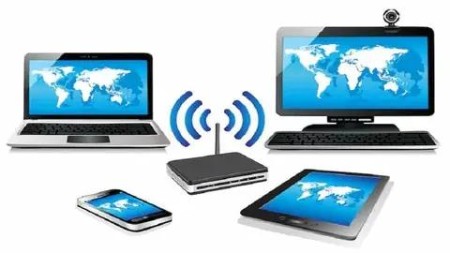Most Commented
Wireless NetWork Fundamentals




Description material

Wireless Network Fundamentals
Duration: 12h 21m | .MP4 1280x720, 30 fps(r) | AAC, 44100 Hz, 2ch | 4.28 GB
Genre: eLearning | Language: English
Wireless LAN (WLAN)
What you'll learn:
Comparing Wired and Wireless Networks
Understanding Basic Wireless Theory
Carrying Data Over an RF Signal
Regulatory Bodies
IEEE Standards Body
IEEE 802.11 Channel Use
IEEE 802.11 Standards
Wi-Fi Alliance
Interference
Free Space Path Loss
Effects of Physical Objects
Antenna Characteristics
Antenna Types
Antenna Accessories
Types of Wireless Networks
Wireless LAN Topologies
Other Wireless Topologies
IEEE 802.11 Frame Types and Addressing
Accessing the Wireless Medium
IEEE 802.11 Frame Types
Client Housekeeping
AP Cell Size
Adding APs to an ESS
Designing and Validating Coverage with Site Surveys
Cisco Wireless Architectures
Cisco Wireless Network Building Blocks
Implementing Autonomous AP
Implementing Cloud-Based AP
Connecting a Centralized Controller
Understanding Controller Discovery
Designing High Availability
Roaming Overview
Roaming Between Centralized Controllers
Roaming Between Converged Controllers
Anatomy of a Secure Connection
Wireless Client Authentication Methods
Wireless Privacy and Integrity Methods
WPA and WPA2
Securing Management Frames with MFP
Locating Devices in a Wireless Network
Troubleshooting Client Connectivity
Troubleshooting AP Connectivity
Checking the RF Environment
Requirements:
CCNA
Description:
A wireless LAN (WLAN) is a wireless computer network that links two or more devices using wireless communication to form a local area network (LAN) within a limited area such as a home, school, computer laboratory, campus, or office building. This gives users the ability to move around within the area and remain connected to the network. Through a gateway, a WLAN can also provide a connection to the wider Internet.
Wireless LANs based on the IEEE 802.11 standards are the most widely used computer networks in the world. These are commonly called Wi-Fi, which is a trademark belonging to the Wi-Fi Alliance. They are used for home and small office networks that link together laptop computers, printers, smartphones, Web TVs and gaming devices with a wireless router, which links them to the internet. Hotspots provided by routers at restaurants, coffee shops, hotels, libraries, and airports allow consumers to access the internet with portable wireless devices.
The IEEE 802.11 has two basic modes of operation: infrastructure and ad hoc mode. In ad hoc mode, mobile units communicate directly peer-to-peer. In infrastructure mode, mobile units communicate through a wireless access point (WAP) that also serves as a bridge to other networks such as a local area network or the Internet.
Since wireless communication uses a more open medium for communication in comparison to wired LANs, the 802.11 designers also included encryption mechanisms: Wired Equivalent Privacy (WEP), no longer considered secure, Wi-Fi Protected Access (WPA, WPA2, WPA3), to secure wireless computer networks. Many access points will also offer Wi-Fi Protected Setup, a quick, but no longer considered secure, method of joining a new device to an encrypted network.
Who this course is for:
Network Engineers , Wireless Engineers
More Info
Please check out others courses in your favourite language and bookmark them
- - - -

Fikper
FileAxa
RapidGator
FileStore
TurboBit
Join to our telegram Group
Information
Users of Guests are not allowed to comment this publication.
Users of Guests are not allowed to comment this publication.
Choose Site Language
Recommended news
Commented



![eM Client Pro 9.2.1735 Multilingual [Updated]](https://pikky.net/medium/wXgc.png)






![Movavi Video Editor 24.0.2.0 Multilingual [ Updated]](https://pikky.net/medium/qhrc.png)

